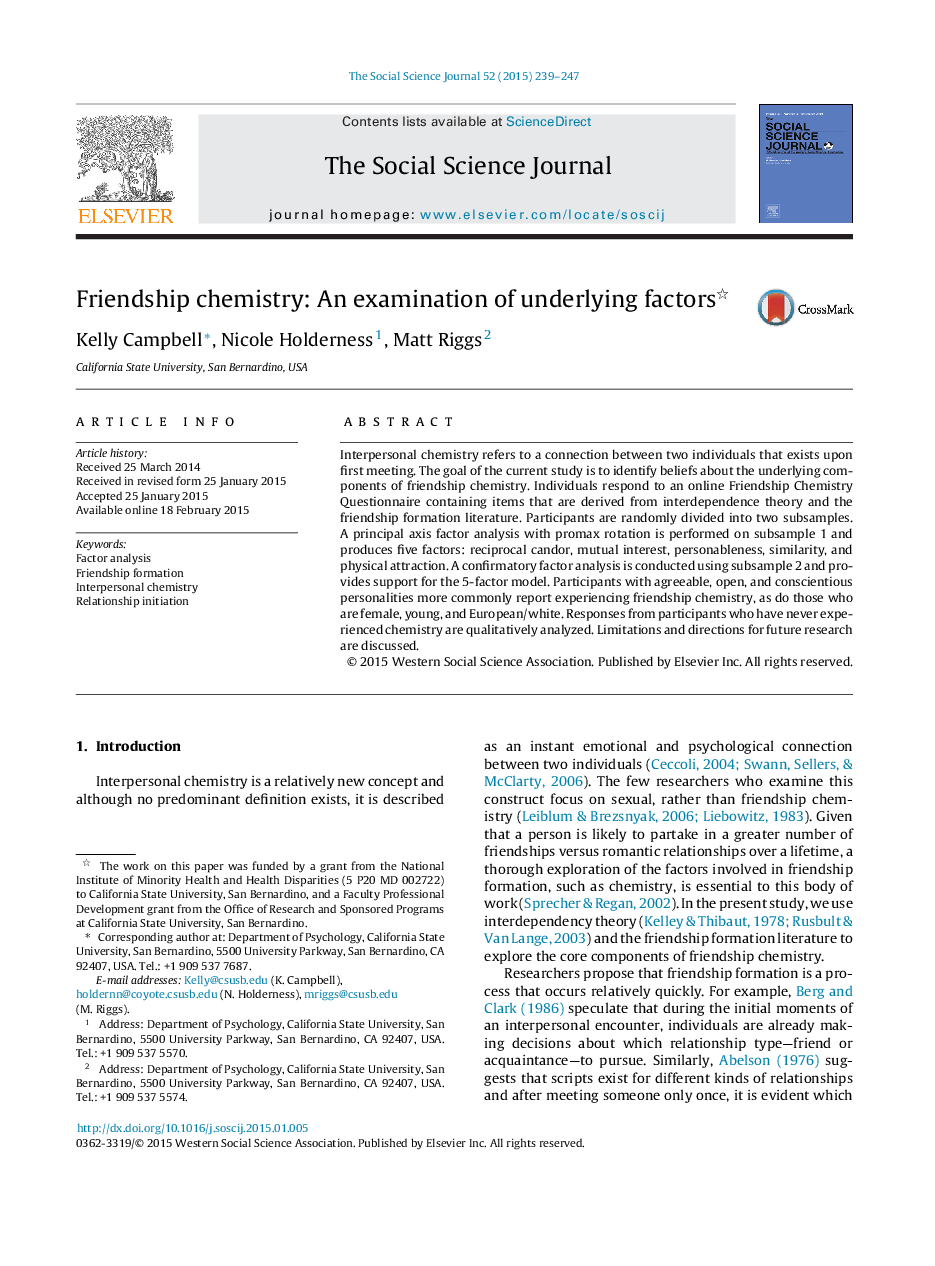| Article ID | Journal | Published Year | Pages | File Type |
|---|---|---|---|---|
| 140022 | The Social Science Journal | 2015 | 9 Pages |
•We identify five underlying factors of friendship chemistry.•Friendship chemistry varies based on demographic and personality traits.•We highlight reasons for not experiencing friendship chemistry.
Interpersonal chemistry refers to a connection between two individuals that exists upon first meeting. The goal of the current study is to identify beliefs about the underlying components of friendship chemistry. Individuals respond to an online Friendship Chemistry Questionnaire containing items that are derived from interdependence theory and the friendship formation literature. Participants are randomly divided into two subsamples. A principal axis factor analysis with promax rotation is performed on subsample 1 and produces five factors: reciprocal candor, mutual interest, personableness, similarity, and physical attraction. A confirmatory factor analysis is conducted using subsample 2 and provides support for the 5-factor model. Participants with agreeable, open, and conscientious personalities more commonly report experiencing friendship chemistry, as do those who are female, young, and European/white. Responses from participants who have never experienced chemistry are qualitatively analyzed. Limitations and directions for future research are discussed.
